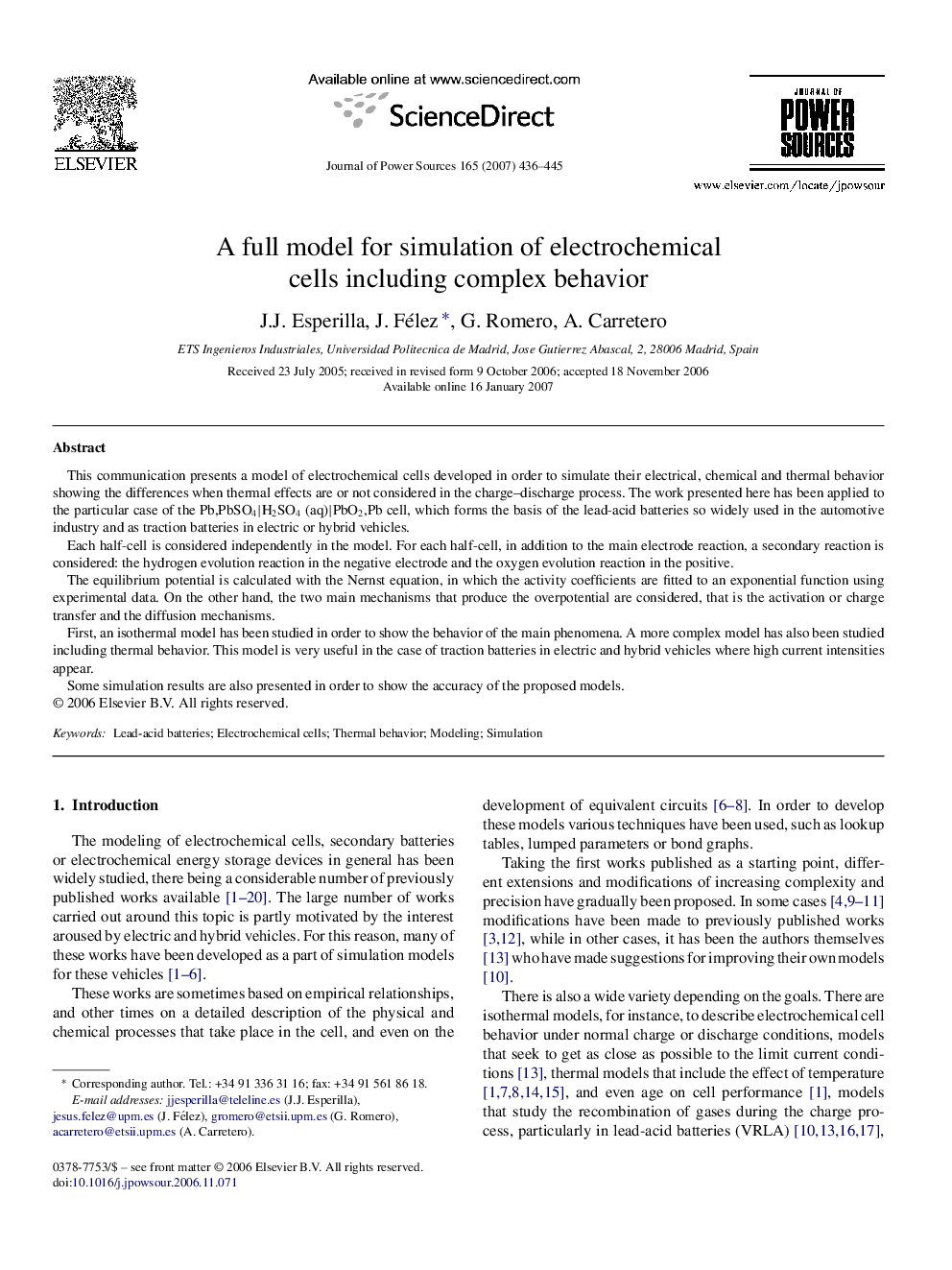| Article ID | Journal | Published Year | Pages | File Type |
|---|---|---|---|---|
| 1291969 | Journal of Power Sources | 2007 | 10 Pages |
This communication presents a model of electrochemical cells developed in order to simulate their electrical, chemical and thermal behavior showing the differences when thermal effects are or not considered in the charge–discharge process. The work presented here has been applied to the particular case of the Pb,PbSO4|H2SO4 (aq)|PbO2,Pb cell, which forms the basis of the lead-acid batteries so widely used in the automotive industry and as traction batteries in electric or hybrid vehicles.Each half-cell is considered independently in the model. For each half-cell, in addition to the main electrode reaction, a secondary reaction is considered: the hydrogen evolution reaction in the negative electrode and the oxygen evolution reaction in the positive.The equilibrium potential is calculated with the Nernst equation, in which the activity coefficients are fitted to an exponential function using experimental data. On the other hand, the two main mechanisms that produce the overpotential are considered, that is the activation or charge transfer and the diffusion mechanisms.First, an isothermal model has been studied in order to show the behavior of the main phenomena. A more complex model has also been studied including thermal behavior. This model is very useful in the case of traction batteries in electric and hybrid vehicles where high current intensities appear.Some simulation results are also presented in order to show the accuracy of the proposed models.
